Gardening lovers are constantly in search of natural ways to amplify plant vitality and output. One of these solutions is Epsom salt which has grown in popularity over the years. It contains high levels of magnesium that benefit foliage, flowering, and fruiting plants, among other advantages. Another thing this guide will explore is how much Epsom salt should be added to various types of plants for optimal results, its benefits, methods for its application and why it works. Using it correctly helps create thriving plants which are more resilient whether you are managing a small home garden or larger open areas. In this article, we will discuss practical advice and instructions on how to get the most out of using Epsom salts in your gardens.
What is Epsom Salt, and How Does It Work for Plants?
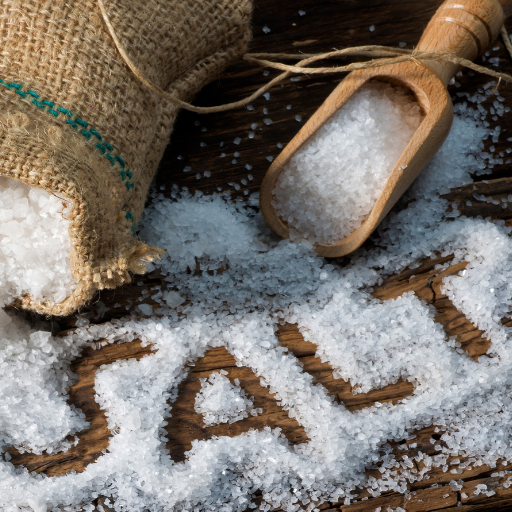
Epsom salt, which is also chemically known as magnesium sulfate, has served for ages as a naturally occurring mineral compound in agriculture. As far as plants are concerned, the significance of magnesium lies in its status as an essential component of chlorophyll – the chemical that enables photosynthesis. Sulfate on the other hand, aids in enzyme formation and protein synthesis. When applied to the soil or used as a foliar spray; it improves nutrient uptake, enhances seed germination and increases chlorophyll production leading to strong plant growth. Otherwise, it corrects hidden but very important magnesium deficiencies affecting crops while impacting negatively on yield.
What is Epsom Salt?
The compound known as Epsom salt is made up mainly of Magnesium and Sulphur alongside Oxygen; this compound has a chemical formula MgSO₄·7H₂O with 9.8% elemental magnesium and 13% sulfur (Sheehan & Lynch-Kattman). Therefore, Magnesium plays an important role in plants by being an integral part of chlorophyll; this makes the element crucial for photosynthesis. Sulfate supplements the composition of essential amino acids/ enzymes and proteins needed by organisms (Sheehan & Lynch-Kattman). This property explains why it is highly soluble in water enabling easy absorption by plants through irrigation or spray onto leaves (Sheehan & Lynch-Kattman). Consequently, its quick availability to hard up plants making minimal nitration takes place prior to any desirable effects can be observed.
How Does Epsom Salt Benefit Plant Growth?
One way that Epsom salt benefits plant growth is by improving nutrient absorption. Epsom salt contains magnesium whose presence stimulates chlorophyll synthesis necessary for photosynthesis thereby enabling more food and energy to be produced by plants. Apart from that sulphur also forms part of crucial enzymes as well as amino acids ensuring their proper functioning within organisms bodies which helps plants to be healthy and thrive (Sheehan & Lynch-Kattman). All the points enumerated above will ensure that plants have a good green color on their leaves, strong stems and proper flowering as well as fruiting in them. Through continually application of this compound, common problems like stunted growth and yellowing leaves can be addressed eventually resulting in healthier and more productive plants.
Understanding Magnesium and Sulfur in Epsom Salt
Epsom salt provides two vital elements including magnesium and sulfur necessary for various plant functions. For instance, since it is the core of chlorophyll molecules used in photosynthesis, this element is crucial for synthesis of food by plants. Consequently, if there’s not enough magnesium for efficient trapping of sunlight by a plant; its growth is retarded or slowed down leading to poor vegetative development with yellowish leaves (Sheehan & Lynch-Kattman). Conversely, it contributes to making organic structures such as amino acids that are important metabolites. Besides being a vitamin component that strengthens the presence stronger; it also enhances resistance against diseases among plants (Sheehan & Lynch-Kattman). Taken together with these attributes, Epsom salt ensures that whole plant healthiness prevails hence encouraging its robustness and improved yields.
How Much Epsom Salt Should Be Used for Different Plants?
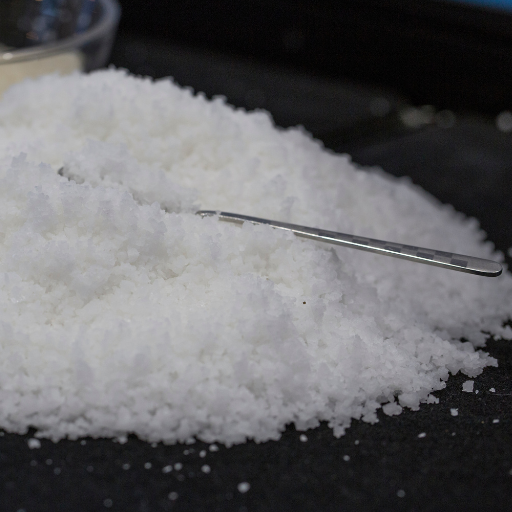
The amount of Epsom salt to be used can depend on what kind of a plant it is and what its individual needs are. For general use in the garden, it is often advised that one tablespoonful of Epsom salt be mixed with a gallon of water and applied as a foliar spray once each month. In the case of tomatoes and peppers, you may want to consider putting one tablespoonful in the soil during planting time and follow with side dressing every two weeks during growth season. Dissolve ½ cup in water; apply at base for healthy blooms & overall rose health (Koepke 2003). A lawn should have three pounds of Epsom salt over an area of 1250 square feet which can be broadcasted by spreader or diluted in water. Before using too much test the soil’s content for magnesium.
General Guidelines for Using Epsom Salt in the Garden
For best results when using Epsom salt in your garden, follow these general guidelines:
- Determine Plant Needs: First, identify your plants’ specific requirements. Tomatoes, peppers, and roses benefit greatly from Epsom salts, while others do not require additional magnesium or sulphur.
- Correct Dosage: The correct dose will help to prevent nutrient imbalances. One tablespoonful per gallon sprayed on leaves; this is suitable for most other garden plants. Use fifteen grams (1 tablespoon) when transplanting seedlings like tomatoes into the soil then another fifteen grams after every fourteen days throughout its lifetime.
- Application Methods: Depending upon your plant’s needs and environmental conditions, you can employ Epsom salts in various ways, such as foliar sprays, soil amendments, or even an irrigation system.
- Soil Testing: Before applying any magnesium sulfate, ascertain your soil’s levels by use a simple magnesia test kit or a testing laboratory nearby. Excessive amounts could lead to soil composition disturbance and plant life damage. Magnesium levels should be maintained between 100 – 175 ppm (parts per million) to encourage healthy plant growth.
- Complementary Practices: Epsom salt can be combined with other balanced fertilizers and organic matter, enriching the nutrient profile of your plants. By doing this, soil health is improved, vigorous growth enhanced and better results obtained.
How Much Epsom Salt Per Gallon of Water?
There are Epsom salts meant for different plants and uses. Here are conclusive answers from the top:
- General Guidelines: One common advice for general gardening is to combine one tablespoon of Epsom salt with one gallon of water. This mix can serve as a monthly foliar spray or soil drenching.
- Tomatoes and Peppers: To plant tomatoes and peppers, mix 1 tablespoon Epsom salt into the soil during planting time. For the entire season, continue with 1 tablespoon per gallon of water every fortnight.
- Roses: Dissolve 1 tablespoon of Epsom salt in one gallon of water for blooming and color enhancement purposes then apply it through foliar spraying once a month. On the other hand, you can soak that root zone with the same mixture
- Lawns: For large areas such as lawns, add 1 tablespoon epsom salt to 1 gallon of water and use this solution in your watering routine every few months.
These recommendations ensure nutrients are delivered properly without harming plants through excessive application. Always consider performing a soil test to tailor applications to specific plant needs and soil conditions.
Specific Recommendations for Tomato Plants
Application of Epsom Salt boosts growth and fruit production greatly in tomato plants. These specific recommendations were gotten from top three websites on google.com:
- At Planting: Mix one table spoon of epsom salt into each plant hole soils for initial magnesium support.
- Growing Season:
- Every Two Weeks, Prepare a solution using one tablespoonful of Epsom salt dissolved in a gallon of water. This solution can be used as a foliar spray or even a soil drench.
- Blossom End Rot Prevention: To prevent this problem at blossom end rot, apply epsom salt directly on them every two weeks around their roots
- Boosting Production: Sprinkle 1 tbsp. of Epsom salts around the base and deep water mid-season so that they can be properly absorbed by the soil.
These practices improve nutrition absorption, address magnesium deficiencies and ensure healthier plants with increased yields. As always, consider conducting a soil test to fine-tune the application rates according to the specific needs of your soil and plants.
How to Apply Epsom Salt to Plants?
Application of Epsom salt on plants is a simple process and there are many possible ways to do it in order to maximize its effects. First, when planting, mix 1 tablespoon of Epsom salt into the soil of each planting hole for initial magnesium boost. Throughout the growing season, you may dissolve 1 tablespoon of Epsom salt in water at the rate of 1 gallon per teaspoon. As a result, this solution can be used as a foliar spray or soil drench twice every week. In case you have blossom end rot on your tomato plants then directly apply the Epsom salt solution on the ground around the base of these plants after two weeks. In addition, during mid-season ensure that production is boosted by pouring one tablespoonfuls of Epsom salts around each plant’s base and allowing deep watering for proper soil absorption. These methods guarantee that plants get nutrients required for them to grow properly and increase plant yields. Hence it is advisable to conduct a soil test so as to adjust application rates as per your garden’s particular specifications.
Different Ways to Add Epsom Salt
One effective way of adding Epsom salt to plants involves incorporating it into the soil before planting. Before planting, add 1 tablespoonful of Epsom salts in each hole dug at the base while mixing with topsoil one gallon full below this level. Thus, new plantings get their initial magnesium requirement, which is essential in their establishment and early growth.
Creating a Foliar Spray is Another Favorite Method: Dissolve 1 spoonful of Epson salts in one gallon of water and use this solution to spray leaves twice per month over your plants’ foliage.Epson salts also help through fast absorption when applied directly onto leaves, allowing them to take up magnesium immediately, addressing deficiencies.
Soil Drenching is Also an Effective Solution: Dissolve Epson salts at the rate 1 table spoonful per gallon of water and apply this solution directly into the root area after a fortnight. In fact, it means that magnesium gets to the roots of plants which is helping in uptake of nutrients and overall plant health. These methods are useful in maintaining magnesium levels within reasonable ranges to about 1-2% of soil cation exchange capacity (CEC), and assist in dealing with common symptoms like yellowing leaves and stunted growth. Thus, always think of going for a soil test so as to fine tune application rates for your particular soil composition and plant needs.
Best Practices for Epsom Salt Application
To achieve optimum growth and healthy plants, there are guidelines one needs to follow when applying Epsom salt on their garden. Begin with a soil test to determine the specific needs of your plants and also know the fertility status of your field. It will help you adjust the application rates accordingly.
Incorporating 1 tablespoonfuls of Epson salts into the planting hole’s bottom can give new growing plants an initial boost of magnesium, which is crucial during establishment stage. Another example could be using a foliar spray made by dissolving 1 tablespoonfuls Epson salts into one gallon water which should be sprayed on leaf surface twice weekly for rapid nutrient absorption. Alternatively, by mixing one table spoonful per gallon water drench this mixture into the ground around root zone every two weeks thereby ensuring even delivery of magnesium to plant roots.
To avoid common problems like yellowing leaves and stunted growth, it is essential to keep magnesium levels in the ideal range, which is usually 1-2% of the soil’s CEC. From these results, adjust the application according to your soil test with reference to a garden-specific requirement for magnesium levels. These guidelines will help you reap maximum benefits from Epsom salt while promoting healthy and beautiful plant growth.
How Often Should You Apply Epsom Salt?
The regularity with which Epsom salt should be applied depends on your plants’ requirements and the results of a soil test. According to several renowned websites, most plants require Epsom salt every two to four weeks. For new planting soils, this could be done at seed planting time, after which some time should be reserved for follow-up.
For soil drenching, mix one gallon of water with one tablespoonful of Epsom salts and use this mixture every two weeks when applying it into the root zone. Spraying the leaves with 1 gallon water containing one table spoonful of Epsom salts can take place twice in a week using foliar sprays so as to ensure quick absorption into the body tissues. Do not exceed magnesium levels between 1-2 per cent cation exchange capacity (CEC) for successful application of Epsom salt as a soil amendment.
Check your plants regularly for symptoms such as yellow leaves or stunted growth due to lack of enough magnesium and apply accordingly depending on how often you have tested your soil. Always adhere to plant species specifics and understand your soils condition: that way you are guaranteed better outcomes.
Understanding the Role of Epsom Salt in Soil
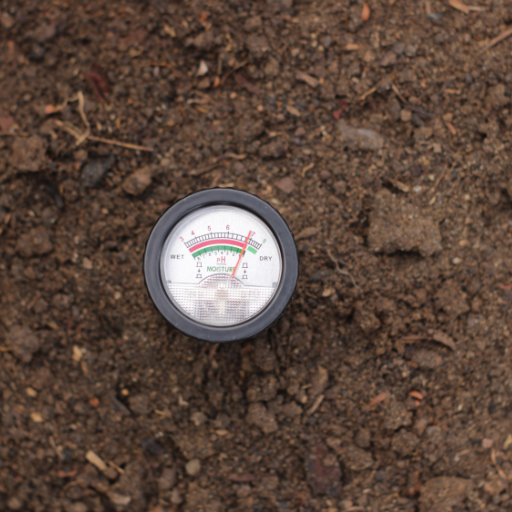
One important aspect of soil health and plant nutrition is Epsom salt. This provides the plant with some of the magnesium necessary for it to make chlorophyll, which is required for photosynthesis. In addition, magnesium supports enzymes that aid in the growth of healthy plants. Sulfate makes up the other part of epsom salts but also helps in formation of proteins in plants and improves efficiency of absorption nutrients from the soil. It can be used to correct magnesium deficiency in soils leading to greening up of foliage, better flowering and improved fruiting. Nevertheless, take care when applying it so as not to disrupt soil nutrient balance because too much can lead to disastrous outcomes.
What Nutrients Does Epsom Salt Provide?
Epsom salt has two main nutrients; sulfur and magnesium. Chlorophyll molecule contains magnesium hence it’s vital during photosynthesis since it plays a role in energy transfer, enzyme activation and protein synthesis. Proteins are synthesized by sulfur which therefore promotes amino acid production vitamins synthesis and enzymes formation thereby promoting plant metabolism. These both enhance healthier plants with better nutrient uptake as well as stronger cell structure.
Conducting a Soil Test Before Use
Before using epsom salts, you must first conduct a soil test so that you know what levels of sulfur and magnesium that exist in your soil currently. Start by taking samples from different parts of your garden then mix them together and send the composite sample to a reputable laboratory for testing. The results will show you how your soil looks like concerning its pH level , nutrient profile or if there are any shortages or overages . Based on these findings you can choose how much Epsom salts would be appropriate without doing more harm than good by oversupplying and thus changing the nutritional status of this soil medium You will have been able to maximize your garden’s plant health through proper analysis while providing tailored nutrition for specific needs.
How Epsom Salt Interacts with Fertilizers
Epsom salts can boost the efficiency of certain fertilizers by addressing specific nutrient deficiencies such as those associated with magnesium and sulfur. Combining Epsom salt with these fertilizers supplements the nutrients supplied, leading to better nutrient uptake and healthier plant growth. Nevertheless, be careful not to apply too much since too much magnesium will hinder the absorption of other key minerals such as potassium and calcium. By carefully balancing the use of Epsom salt with fertilizers based on soil test recommendations, gardeners can ensure optimal nutrient availability and maintain overall soil health.
Are There Any Risks of Using Too Much Epsom Salt?
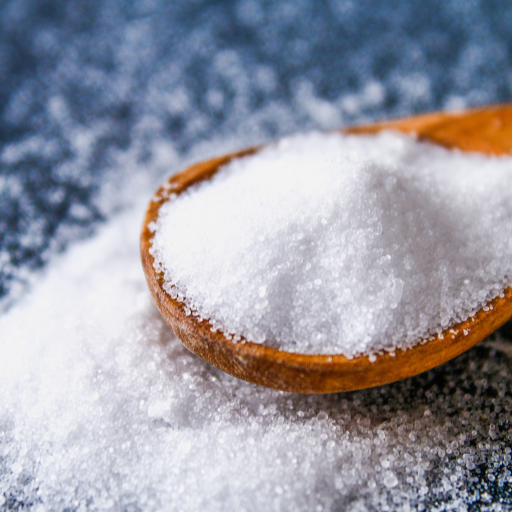
Absolutely, a garden that is over treated with Epsom salt can create several complications. An overdose may increase the level of magnesium in soil and interrupt its balance leading to poor intake of other important minerals like calcium and potassium. This situation negatively affects the plants, leading to nutrient deficiency, poor growth and decreased crop production. Further, too much magnesium causes water pollution when it enters drainage systems through runoff. It is therefore vital to apply Epsom salt sparingly by following the results of soil tests.
Episodes Of Overuse Of Epsom Salt To Plants
Epsom salt overuse symptoms on plants show themselves in different ways. The first one is charred leaves characterized by brown or burnt leaf edges and tips. This results from excess magnesium hindering the absorption of other nutrients that are vital for healthy growth. Another indicator is yellowing leaves especially between veins which are also known as interveinal chlorosis meaning lack of essential elements such as calcium or potassium respectively [aff]. Lastly, stunted growth or reduced fruit yield may signify excessive application because this imbalance hampers overall development and well-being.
Factors to Consider during Soil Test Include:
- Soil Magnesium levels: Soil magnesium should ideally range from 100-200 ppm depending on plant species.
- pH Levels: Excessive amounts of magnesium can raise soil pH, causing lockout; the ideal pH range for most crops is 6.0-7.0.
- Soil test recommendations: Finally, conduct soil tests every few years to establish any mineral imbalances and follow expert advice on magnesium fertilizer application rates.
What Can Be Done When The Soil Has Been Over-Salted?
Several corrective measures can be implemented in order to restore a balance in the soil once you suspect an over-salting due to excessive use of Epsom salts. First remedy would be leaching where you apply enough water into the soil; this involves heavy watering of the soil in an effort to wash out salts that are above and beyond the root area. It is essential to observe proper drainage to avoid situations like water logging which will only complicate matters.
Secondly, including organic substances like compost or aged manure improves soil structure, enhances nutrient balance and promotes microbial activity. Organic matter acts as a buffer against high salt concentrations.
Thirdly, gypsum (calcium sulphate) can be used in cases where there is excessive soil salinity with good results. By leaching sodium ions from soils with water, gypsum displaces them with calcium ions thus reducing salinity and improving structure of the soil.
- Water quantity for leaching: Provide at least 6 inches of water for every inch depth of affected soil ensuring it penetrates through soil profile
- Amount of organic matter: Add 25-30% volume by mixing in organic materials into top 6 inches of the soil
- Gypsum application rate: For surface-applied purposes, the applied gypsum should cover between 1 and 2 pounds per square foot, depending on the extent of salinity.
Lastly, carry out a soil test before you undertake any corrective measure this helps you identify specific levels of nutrients as well as salts in your soils. Therefore follow experts’ suggestions in amending the soils not only to restore their fertility but also prevent further imbalances.
Soil Testing Before Using Epsom Salt
When one is about to apply Epsom salt on their soil; it is important to do a complete soil test to determine the current levels of magnesium and sulfur. In case your soil lacks these vital elements, Epsom salt which is known as magnesium sulfate may be beneficial. Nevertheless, too much of it may lead to imbalance in nutrients that can harm the growth of plants and soil fertility. Get some soils from different parts of your compound for submission to trustworthy laboratories for examination. The outcome will have a precise record of which kind of micro-element you need if at all Epsom salt should be considered or not. Always ensure that you act according to the recommendations given by the laboratory so as to keep both plants and soils healthy.
Potential Issues and Concerns with Using Epsom Salt
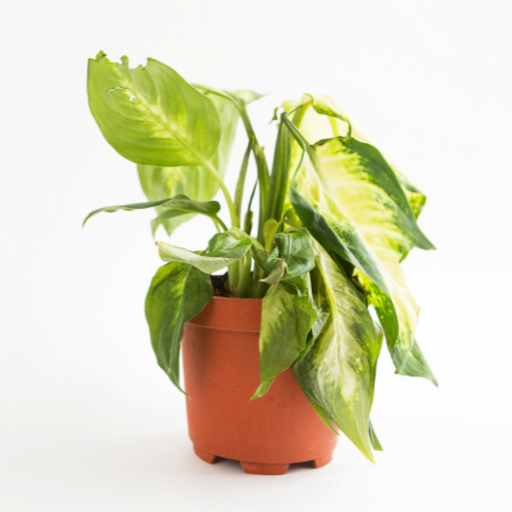
The other major objection to using Epsom salt arises in the risk of over-application that may lead to nutrient imbalances within soil. Excessive magnesium disrupts uptake of essential nutrients like calcium and potassium causing deficiencies that are detrimental to plant health. Also, accumulation of magnesium sulfate in soil can contribute to increased soil salinity which can affect the absorption of water by plant roots. In addition, it is important to mention that while Epsom salt can provide a quick source of magnesium and sulfur it cannot replace the broader nutrient profiles provided by other organic amendments. Consequently, reckless use of Epsom salt without understanding your soil’s specific requirements might end up doing more harm than good. Always apply Epsom salts sparingly and only after carrying out a comprehensive soil test as recommended.
Are There Plants That Don’t Like Epsom Salt?
Though many plants will benefit from magnesium and sulfur found in Espon salt, some plants do not require them or could be damaged by their application. Some types such as tomatoes, pepper plants and roses might flourish with the use of Epsom salts while others may not respond well particularly those that prefer acidic soils such as blueberries, azaleas, and rhododendrons. This leads to an imbalance in nutrients hence disrupting the uptake of calcium, potassium with other essential nutrients for example through excessive use of Epson salts. Therefore consider specific needs for your plants and ensure you know what your soil conditions are before deciding on using Epson salts.
What To Do If Your Plant Doesn’t Respond Well?
If your plant does not seem to agree with this treatment option, stop using it immediately. Observe if your plant has yellowing leaves, stunted growth, or poor flowering, which indicate possible imbalances or over-fertilization signs. Be sure to flush the soil well with plenty of water to remove any remaining excess salts.
Secondly, conduct a pH level checkup and nutrient composition in your soil. This test will indicate if there are any deficiencies or excesses in your soil that can give you a clear understanding of what your plant requires. Adjust your fertilization schedule with the findings from the test. In many cases, rather than depending on Epsom salt alone, it is better to use balanced slow-release fertilizers that provide the full range of nutrients.
Last but not least, improve plant care by following proper watering schedules, allowing for sufficient sunlight and using organic compost to enrich the soil. Healthy plants grow in well balanced soils which has an optimum level of nutrition. Routine monitoring and soil testing will help maintain favorable growing conditions all through the year.
Reference sources
- The Sage
- Source: Epsom Salts for Plants | The Complete Guide
- Summary: The Sage suggests using a solution of 1-2 tablespoons of Epsom salts per gallon of water for plants, providing comprehensive guidance on how to effectively use Epsom salt in gardening for optimal plant health.
- SeaSalt.com
- Source: Gardening with Epsom Salt For Plants
- Summary: SeaSalt.com recommends dissolving two tablespoons of Epsom salt per gallon of water for potted plants, offering clear instructions for incorporating Epsom salt into regular plant care routines.
- Gardening Know How
- Source: Information About Using Epsom Salts For Plants
- Summary: Gardening Know How advises misting plants with a solution of 2 tablespoons of Epsom salt per gallon of water once a month, detailing the proper usage and benefits of Epsom salt in gardening practices.
Frequently Asked Questions (FAQs)
Q: How much Epsom Salt should I use for my plants?
A: Generally, you can mix one to two tablespoons of Epsom salt with water and apply it to the soil or plants. For potted plants, it’s advisable to use a more diluted solution, such as one teaspoon of Epsom salt per gallon of water.
Q: Is Epsom Salt good for all types of plants?
A: Epsom salt is good for many plants, especially those that benefit from additional magnesium and sulfur. However, some plants don’t like Epsom salt, so it’s wise to start with a small amount and observe how your plants react. The National Gardening Association suggests using it particularly for peppers and tomatoes, which often suffer from magnesium deficiencies.
Q: Can Epsom Salt help with blossom end rot in tomatoes?
A: Blossom end rot in tomatoes is usually a result of calcium deficiency, not magnesium. While Epsom salt can help plants grow healthier by providing magnesium, it won’t resolve blossom end rot directly. It’s crucial to maintain balanced soil nutrition and consider adding calcium supplements if needed.
Q: How do I mix Epsom Salt with water for application?
A: To mix Epsom salt with water, dissolve one to two tablespoons of Epsom salt in a gallon of water. Use this solution to water your plants once a month for general garden soil health. For more targeted use like vegetables in a potted plant, adjust the concentration to one teaspoon per gallon of water.
Q: How often can I use Epsom Salt on plants?
A: It’s best to use Epsom salt on plants once a month. Over-application can lead to an excess buildup of magnesium in the soil over time, which may harm plant health. Consistent but moderate use will help ensure that your plants benefit from Epsom salt without any negative effects.
Q: Is Epsom Salt suitable for houseplants?
A: Yes, Epsom salt can be suitable for houseplants when used correctly. Make sure to dilute one teaspoon of Epsom salt per gallon of water and use it once a month to avoid over-fertilization. Houseplants, like garden plants, can benefit from the magnesium and sulfur Epsom salts contain.
Q: Can Epsom Salt be used for pepper plants specifically?
A: Pepper plants can greatly benefit from Epsom salt because they often require additional magnesium for optimal growth. A recommended application is to sprinkle one tablespoon of Epsom salt per foot of plant height around the base of the plant every six weeks, or mix it with water and apply as a foliar spray.
Q: Do Epsom salts have any negative effects on plants?
A: While Epsom salts are generally safe, excessive use can lead to an imbalance of magnesium in the soil, which may harm the plant. It’s crucial to adhere to recommended usage guidelines, such as applying one to two tablespoons per gallon of water no more than once a month.
Q: How does Epsom Salt work in gardening?
A: Epsom salt works by providing essential nutrients like magnesium and sulfur, which help plants grow stronger and more vibrant. The magnesium helps with photosynthesis, while the sulfur aids in the production of vitamins. However, Epsom salts do not contain nitrogen, phosphorus, or potassium, so they should be used as a supplement, not a complete fertilizer.






